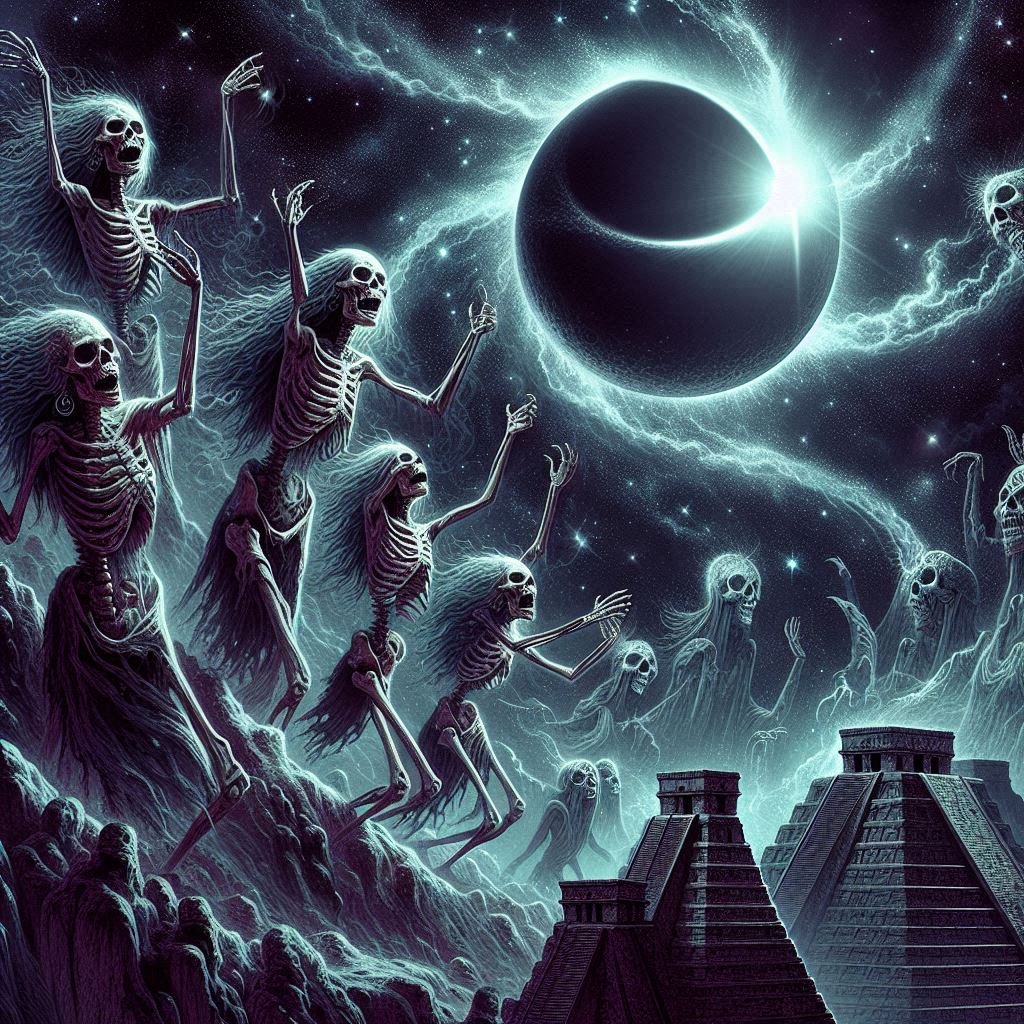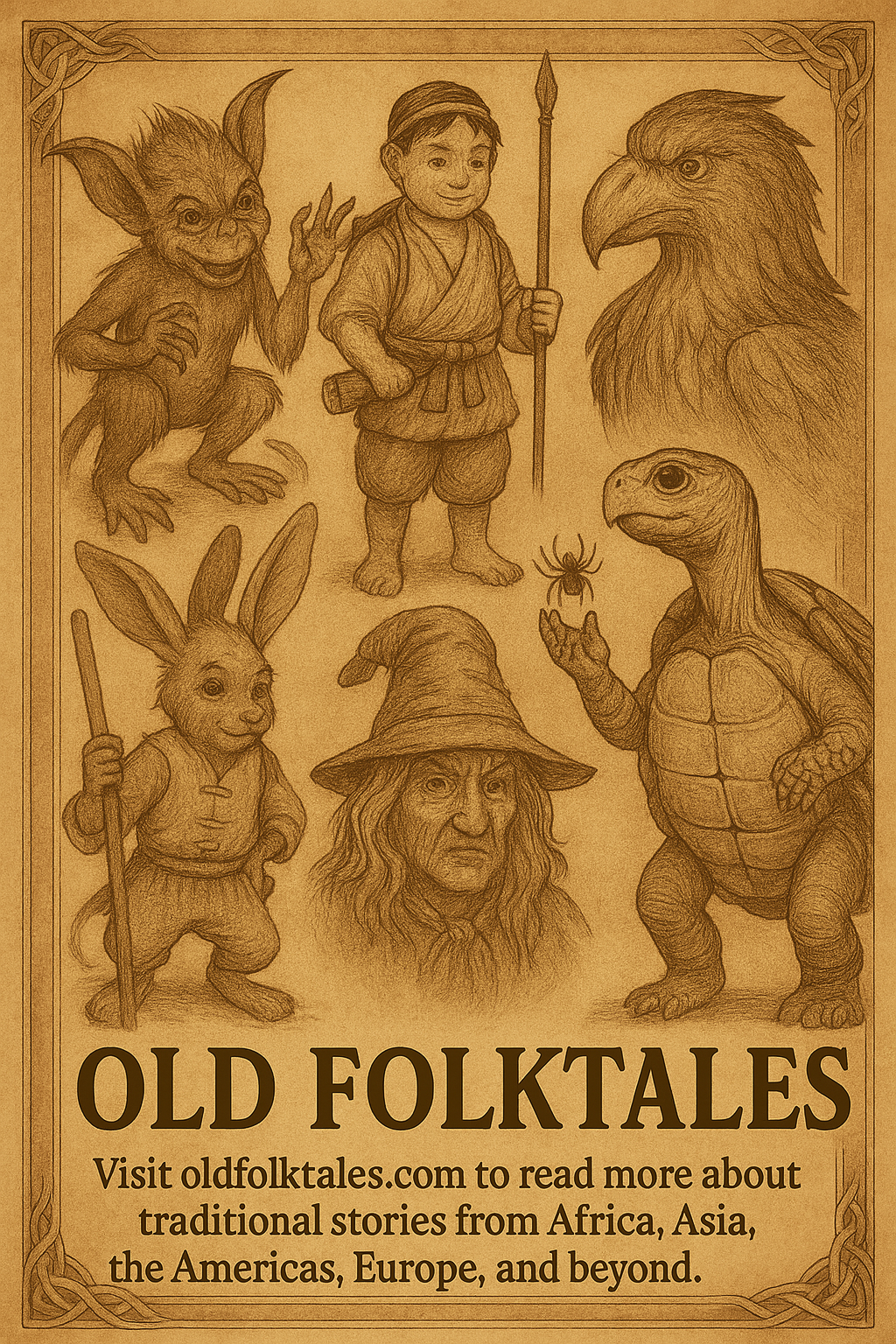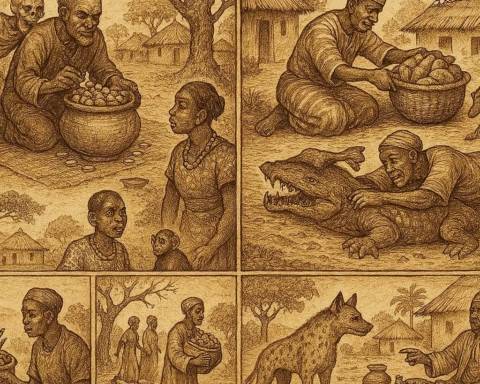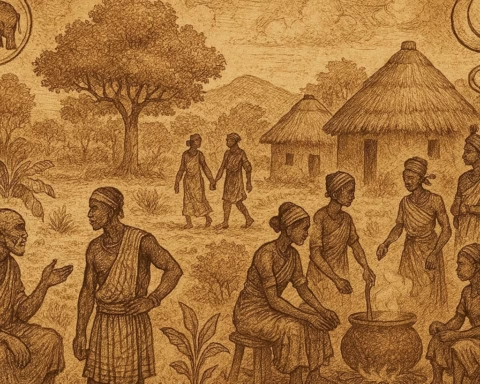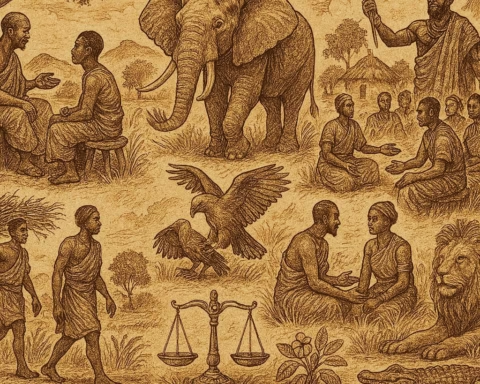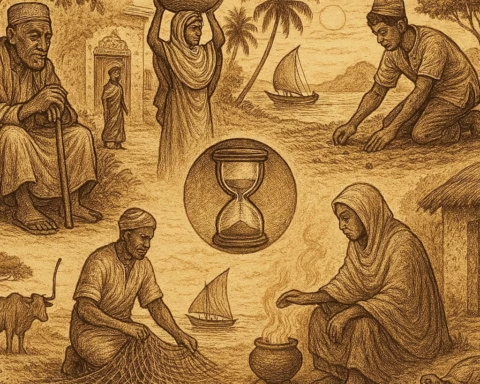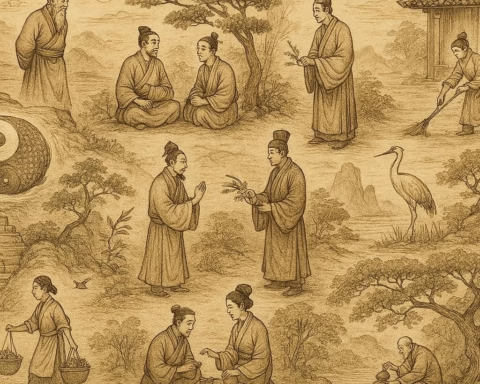The terror of the night sky
In the ancient Aztec world, the stars were not only lights in the sky but living spirits with great power. Among them were the Tzitzimimeh, fearsome cosmic beings that appeared as skeletal women who roamed the night sky during solar eclipses. The people feared their wailing winds, which were said to bring destruction and chaos to the world. When the sun disappeared, the Tzitzimimeh descended to the earth, threatening to tear down creation itself unless the people honored the gods with offerings and prayers.
The priest’s desperate plea
During a great eclipse, a priest named Izel stood atop the temple, chanting sacred prayers to the gods. The sky darkened and the winds howled with a terrifying wail as the Tzitzimimeh drew near. Izel’s heart pounded, but he called out boldly, “Great Tzitzimimeh, protectors and destroyers, hear my words. We honor the gods and beg for mercy to keep the world safe.” The spirits paused, their hollow eyes glowing, as the wind carried their mournful cries across the land.
The dance of destruction
Suddenly, the Tzitzimimeh began their cosmic dance, spinning through the sky with wild energy. The earth trembled beneath their feet and stars seemed to fall like sparks. Trees bent and rivers roared as if the world itself was holding its breath. Izel continued his prayers, calling on the gods to calm the spirits and restore balance. The wailing winds grew louder, and villagers below shivered in fear, watching the night sky alive with power and menace.
The sacrifice of harmony
To appease the Tzitzimimeh, the priests prepared offerings of maize, blood, and precious stones. Izel offered his own blood in a sacred ritual, cutting his palm to let the life flow. The Tzitzimimeh’s wails softened, and their fierce dance slowed as they accepted the sacrifice. The sky brightened slowly as the sun returned, and the terrifying spirits faded back to the stars, leaving the world unharmed for another day.
The warning in the winds
From that time, the Aztec people remembered the Wailing Winds of the Tzitzimimeh as a powerful reminder of the fragile balance between creation and destruction. They knew that the stars watched over them, but those cosmic spirits also demanded respect and sacrifice. Without honor and humility, the world risked falling into chaos once more under the terrible wails of the night.
Moral Lesson of The Wailing Winds of Tzitzimimeh
This tale teaches that balance and respect for cosmic forces are essential. Creation and destruction are intertwined, and humility before greater powers protects life. Ignoring this balance invites chaos and loss, while honor brings peace and harmony.
Knowledge Check
- What is the moral of the folktale The Wailing Winds of Tzitzimimeh?
The story teaches respect for cosmic balance showing how humility and offerings prevent destruction and chaos. - What cultural group does the tale The Wailing Winds of Tzitzimimeh come from?
This folktale originates from the Aztec tradition of Mexico. - Why did the priest Izel offer his blood to the Tzitzimimeh?
Izel offered his blood as a sacrifice to appease the spirits and protect the world from destruction. - How does the folktale The Wailing Winds of Tzitzimimeh explain the behavior of cosmic spirits?
It shows that cosmic spirits demand respect and offerings to maintain the balance between creation and destruction. - Is The Wailing Winds of Tzitzimimeh a ghost story origin tale trickster story or spirit tale?
It is a spirit tale reflecting Aztec beliefs about powerful celestial beings and cosmic balance. - Why is the tale The Wailing Winds of Tzitzimimeh still meaningful to modern readers?
The story remains relevant because it teaches timeless lessons about respect for nature cosmic forces and the need for balance.
Cultural Origin
This folktale comes from the traditional beliefs and storytelling practices of the Aztec people of Mexico.
